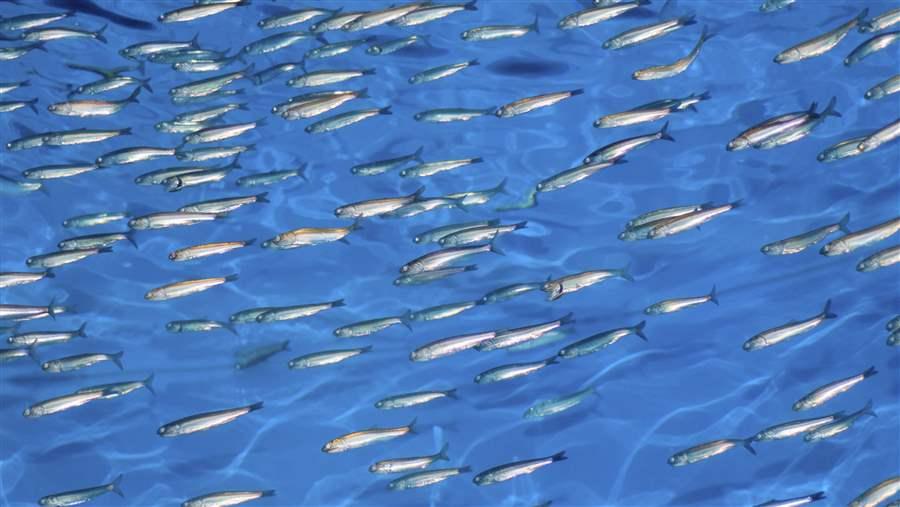Forage Fish Collapse Is Amplified by Fishing
A new study shows for the first time that fishing is likely to worsen population collapses in a group of small but important species known as forage fish.
Scientists have long known about the wide fluctuations in the abundance of forage fish, including the occasional population collapse. But they had not been able to figure out whether such collapses were entirely natural or were related to fishing.
 © iStockphoto
© iStockphotoForage Fish
Forage fish, such as anchovies (above), are a key source of food for tuna, salmon, whales, and seabirds.
“It has been a big question for scientists for a long time,” said Tim Essington, the lead author and a Pew marine fellow. “We suspected a connection between fishing pressure and collapse, but we didn’t have the evidence until now.”
Essington, a professor at the University of Washington, and his colleagues looked at population data for 55 stocks of anchovies, sardines, and other forage fish from around the world. Of those, 27 had collapsed at some point.
“We looked at what happened just before each collapse,” said Essington. “We saw that fishing was particularly intense right before and during the collapse—50 to 200 percent higher than average. At the same time, the rate of reproduction was plummeting.”
To further investigate the impact of fishing, Essington and his co-authors asked whether the collapses resembled natural patterns.
“Because there are no good data on unfished populations, we simulated what natural fluctuations would look like,” he said. “It became clear that the collapses we saw were extremely unusual and were not consistent with the natural fluctuations.”
The collapsed fish stocks declined to levels that were lower than in 97 percent of the simulations. Though forage fish eventually rebound, the collapses deprive other species of food and fishermen of income for as long as the population is depressed.
“Some of the largest fisheries in the world depend on forage fish,” said Essington. “They are also a key source of food for tuna, salmon, whales, and seabirds. When forage fish collapse, the effects on these larger species and on fisheries are far-reaching.”
Essington also looked into potential solutions and found that suspending fishing when a population drops below half of its long-term average would prevent an estimated 70 percent of collapses, while fishermen would only have to forgo 2 percent of their catch.
MORE FROM PEW
Explore Pew’s new and improved
Fiscal 50 interactive
Your state's stats are more accessible than ever with our new and improved Fiscal 50 interactive:
- Maps, trends, and customizable charts
- 50-state rankings
- Analysis of what it all means
- Shareable graphics and downloadable data
- Proven fiscal policy strategies
Welcome to the new Fiscal 50
Key changes include:
- State pages that help you keep track of trends in your home state and provide national and regional context.
- Interactive indicator pages with highly customizable and shareable data visualizations.
- A Budget Threads feature that offers Pew’s read on the latest state fiscal news.













